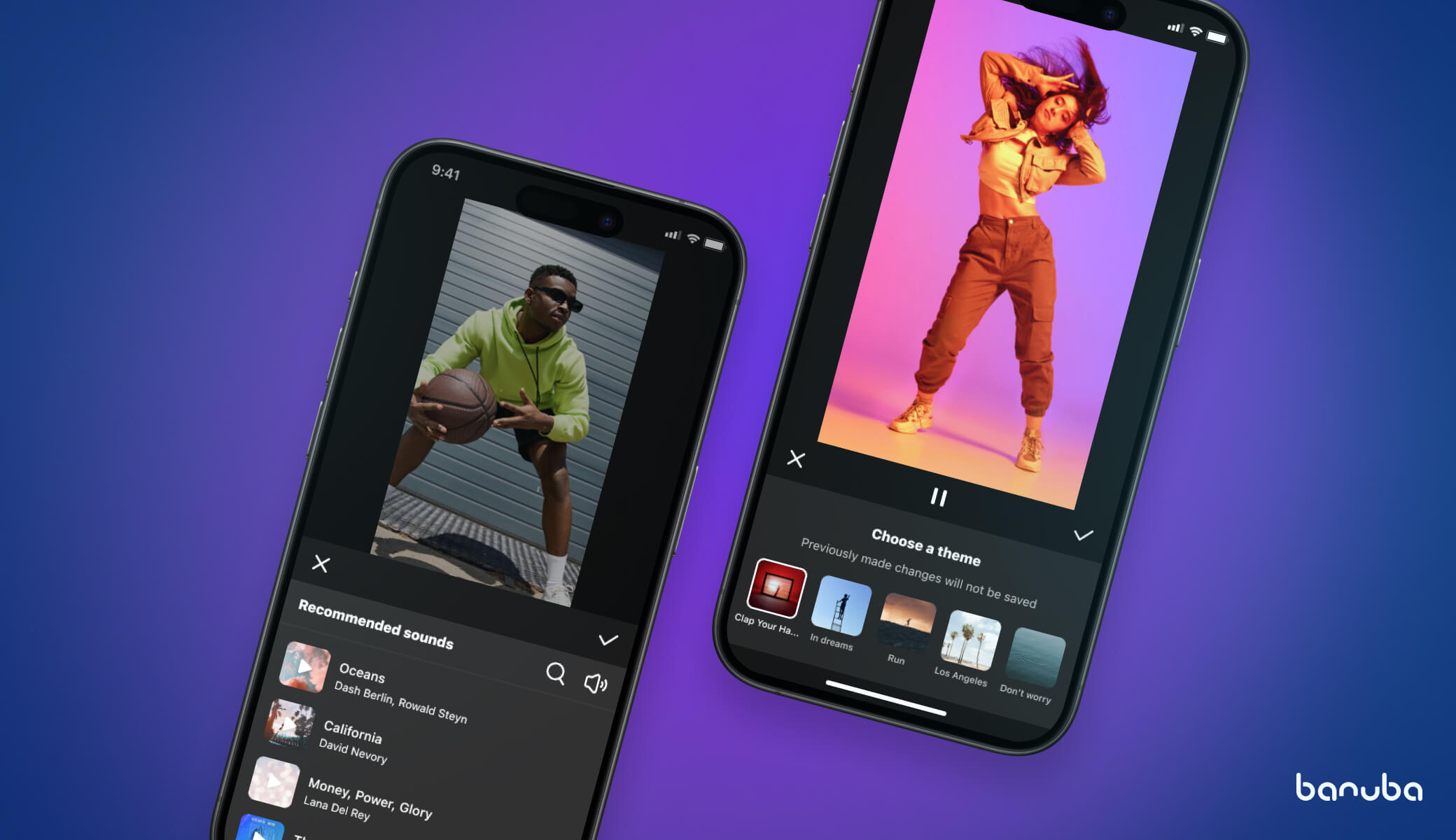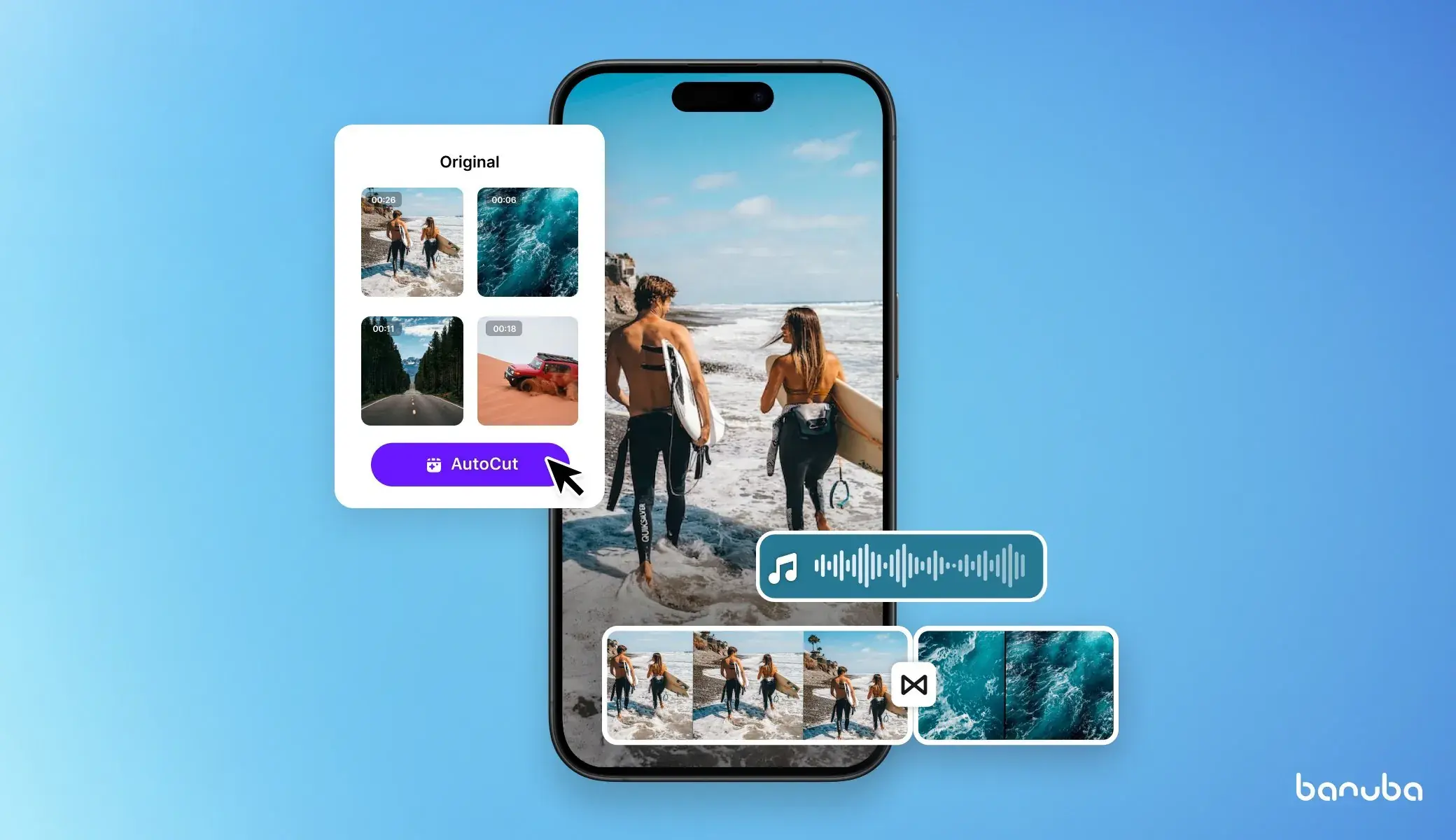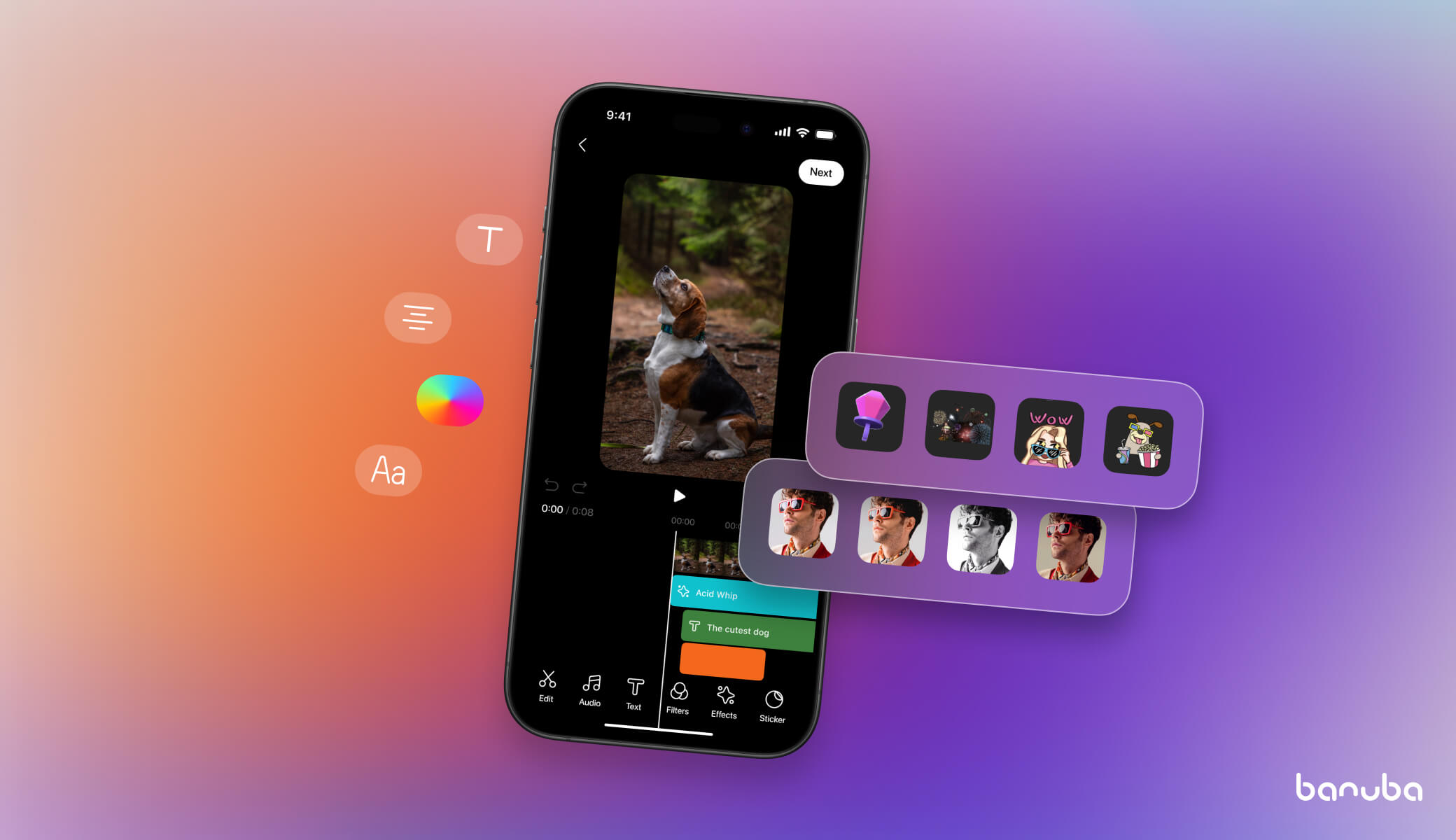[navigation]
How templates work
Video templates provide customizable structure for a clip. This helps users quickly create their content by populating the selected spots with the videos, effects, and overlays of their choice.
This is what makes up a template:
- Layout with placeholders. A number of elements arranged on different layers and grid locations. This is the core of the template.
- Predetermined aspect ratio. To easily create content for a specific platform, users can choose the the ratio that fits it.
- Convenient UI. The main purpose of this feature is to streamline video creation. An intuitive interface using approach like drag-and-drop serves it well.
- Media integration. Provides convenient access to music and videos.
- Visual effects. Templates often have predetermined effects, but can also include recommendations for other fitting ones.
- Sound effects. Something to change the music, voices, etc.
- Export settings. Formatting the end result for sharing or storage.
- Template sharing. Many platforms allow users to share their custom templates with others via their cloud.
- Analytics. Some advanced options include analytics features that track engagement metrics (like views and shares) once the video is published, allowing creators to refine their future content based on performance data.
Developers can add such functionality to their apps by integrating a video templates SDK or a video templates API. More on this later.
 Creating a video with templates in TikTok
Creating a video with templates in TikTok
AI clipping in a nutshell
The AI clipping feature automates the video creation process by leveraging the power of artificial intelligence. The neural network transforms raw input into ready-to-post videos with various transitions, effects, and a precise music match.
Here is how users can interact with it:
- User selects clips and music. People can choose their desired clips and accompanying music within the app.
- AI trims the videos. The AI algorithm intelligently trims the selected clips to match the tempo and rhythm of the chosen track.
- AI adds various effects. Artificial intelligence enhances the content by adding a variety of effects to create visually stunning content.
- User exports, edits, or regenerates the clip. Upon completion, users have the flexibility to export the video as is, make further edits, or regenerate the clip for a fresh perspective.
It is the next step in the evolution of templates, allowing more flexibility and quicker content creation.
Templates vs AI clipping
AI clipping and video templates both offer unique advantages and disadvantages for content creators. Here’s a breakdown of each:
Advantages of AI clipping:
- Ease of use: AI clipping simplifies the editing process by automatically combining clips and trimming them to fit the desired length, making it user-friendly for those who may not have extensive editing skills.
- Time efficiency: It saves time by quickly cutting videos to the appropriate length without needing manual adjustments, allowing creators to focus on content rather than editing.
- Dynamic editing: The feature can create a more dynamic feel by automatically syncing cuts with music or sound, enhancing the overall viewing experience.
- Encouraging creativity: By removing the burden of precise editing, creators may feel more liberated to experiment with their content and try different styles.
- Improvements over time: Neural networks learn and get better, so with each update of the AI clipping SDK it produces better results.
Disadvantages of AI clipping:
- Lack of control: Users may have less control over the final product, as this feature makes decisions that might not align with the creator’s vision.
- Potential for over-cutting: The automatic trimming could lead to important moments being cut out, which may affect the storytelling aspect of a video.
Advantages of Video Templates:
- Structured guidance: Templates provide a clear structure for videos, making it easier for creators to follow a specific format or theme.
- Professional appearance: Using templates can give videos a more polished and professional look, which can attract more viewers.
- Customization options: Many templates allow for customization, giving creators the opportunity to add their personal touch while still benefiting from a solid foundation.
- Variety of styles: Templates often come in various styles and formats, allowing creators to choose one that best fits their content and audience.
Disadvantages of Video Templates:
- Less flexibility: While templates provide structure, they can also limit creativity if users feel confined to the template’s design and flow.
- Overuse risk: Popular templates can lead to content that feels repetitive or cliché if many creators use the same ones.
- Time investment: Setting up and customizing templates can take longer than simply using clipping, especially for those who want to make significant changes.
In summary, both features cater to different needs and preferences among creators. AI clipping is great for quick and easy edits, while video templates offer more structure and professionalism at the cost of some flexibility. They aren’t mutually exclusive: your app can have both a video templates library and the ability to automatically trim and recut.
Getting AI clipping for your app
A technically complex feature like that is expensive and time-consuming to develop. The optimal way to get it is to install an AI clipping SDK, AI clipping library, or AI clipping API – a ready-made module which takes a few hours to integrate.
Banuba Video Editor SDK is a good example of this. It is a full-fledged audiovisual content creation suite that offers many more features:
- Video recording
- Trimming/merging
- Transition effects
- 3D masks
- Background changer
- Rapid/slo-mo
- Picture-in-picture
- Color filters
- Music provider integration
- Etc.
It is compatible with native and cross-platform apps, so you will be able to benefit from it no matter your preferred technology.
Despite its expansive feature set, Banuba Video Editor SDK only takes 30 Mb when integrated into an app. And tuning even the most advanced features is easy thanks to simple design & thorough documentation.
Integrating an AI clipping SDK
The first step is to request the SDK archive and the trial token. This way you’ll be able to test this product for 14 days, no credit card required. Simply send us a message through a contact form below.

The second step is to merge the SDK with your project. It is distributed as CocoaPods or Maven packages (depending on the platform) to speed up integration. See the detailed updated instructions below (links to GitHub):
Banuba Video Editor SDK integration is very simple, and takes less than 8 minutes. And if you decide to purchase a license, you likely can afford it. Thanks to flexible pricing based on the feature set, supported platforms, and number of MAUs, Video Editor SDK can fit the budget of a mid-sized company or a startup.
Conclusion
Both video templates and AI clipping help users easily create shareable content. Each approach has its advantages and disadvantages, and they are complementary to each other, rather than opposed. You can integrate an AI clipping SDK easily by following the guide in this article. And you will get 14 days to freely explore it and see how it fits your vision.




 Creating a video with templates in TikTok
Creating a video with templates in TikTok


